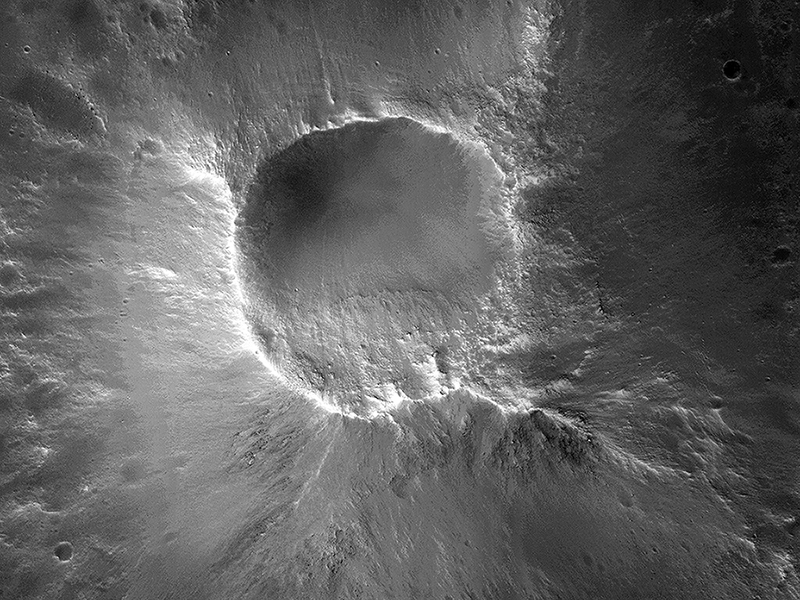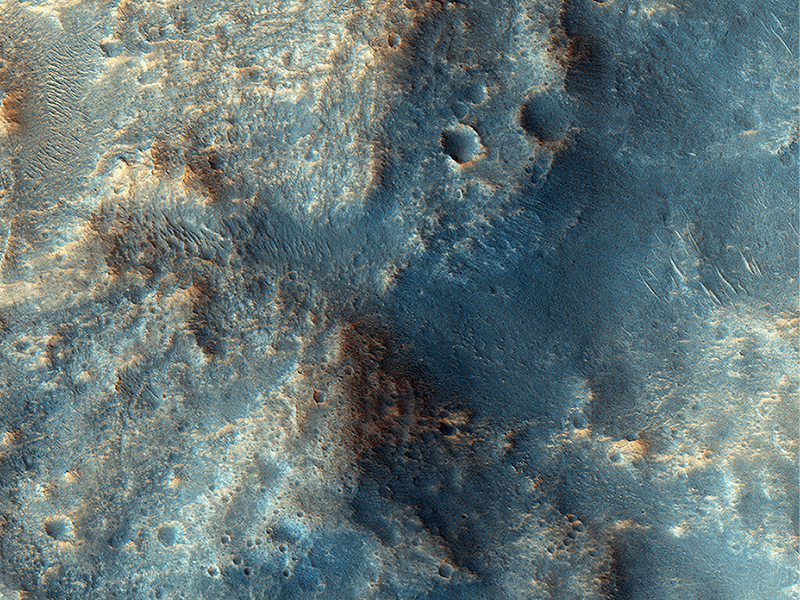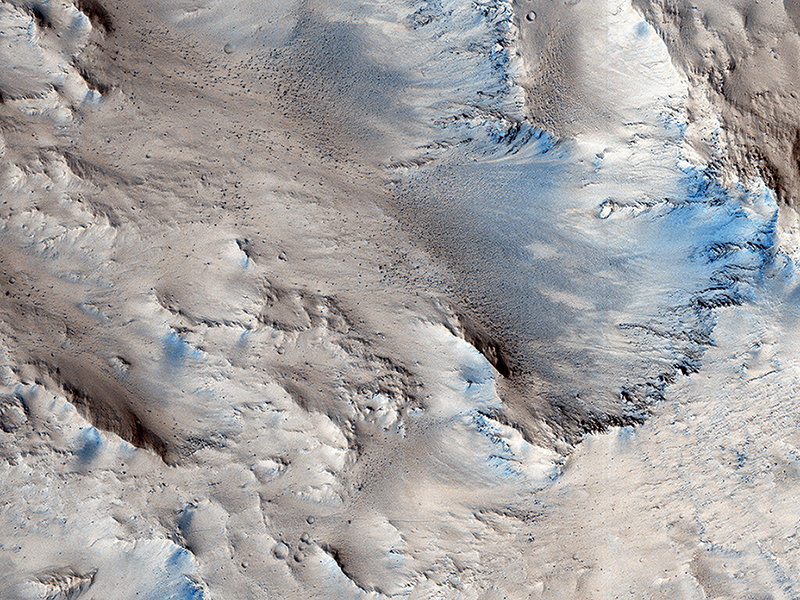HiRISE Science Team wrote:Cratered Summit of a Knob (ESP_038877_2135) (HiClip)
There are many knob formations is the southeastern Acidalia region of Mars. All show a hilltop crest except one which has a summit crater that resembles a cone volcano.
Knobs like these likely formed from interactions between water ice and lava. For instance, the crater at the top of the center knob is likely from a steam explosion when lava vaporized ice. As such, this summit crater is not an impact crater.
This caption is based on a public target suggestion from HiWish.
Kirby Runyon wrote:A Plateau in Ares Vallis (ESP_038877_1875) (HiClip)
This channelized area is near the source region of the huge outflow channel, Ares Vallis. It was at the distal end or “long-ways down-river-area” where the Pathfinder/Sojourner mission landed on 4 July 1997.
This tiny region of Ares Vallis is on a plateau and did not contribute much to the overall water discharge. The slope downhill at the northeast edge of the image leads to the main channel.
Dune- and ripple-like transverse aeolian ridges (TARs) have since covered the bottom of the channels. These are oriented perpendicularly to the winds that must flow through these now-dry channels.
Edwin Kite & Kirby Runyon wrote:Sedimentary Fans North of Mojave Crater (ESP_038851_1900) (HiClip)
In this observation, does the morphology of these possible sedimentary fans match those found in Mojave Crater?
A high resolution image can be useful to determine systematic changes in boulder size (an indication of how much energy moved the sediment) or channel characteristics (e.g. width, depth) with distance from Mojave. Is fan stratigraphy, erosional state, and crater density consistent with Mojave as a source of the sediment?
Mojave Crater is special on Mars due to the evidence in and surrounding it that rain may have fallen there in Mars’ past. Rain is thought to have been overwhelmingly, exceedingly rare in Mars’ history, though a local rain event could have been caused by the heat of the impact that formed Mojave Crater.
Note: Mojave Crater is not pictured in this observation.
Credit: NASA/JPL/University of Arizona
<< Previous HiRISE Update


